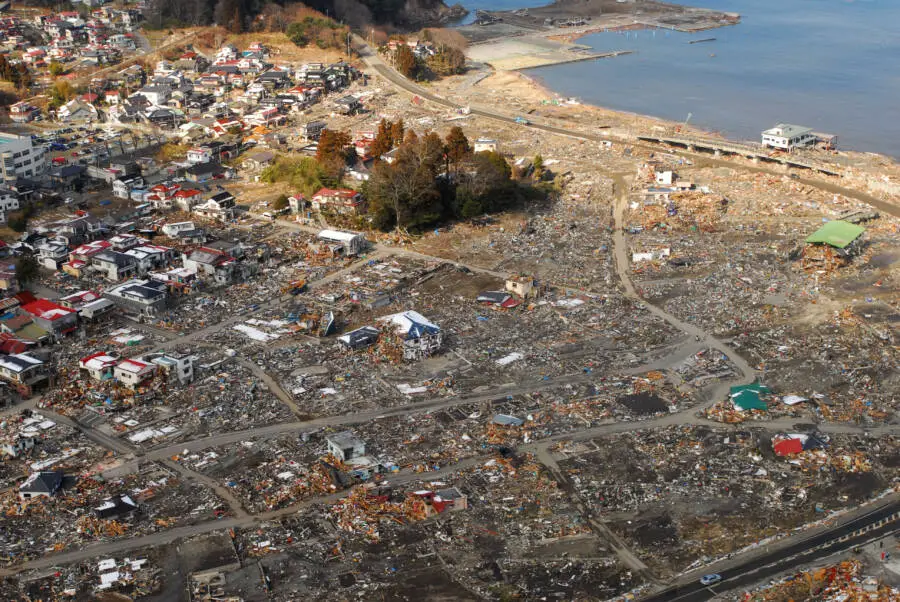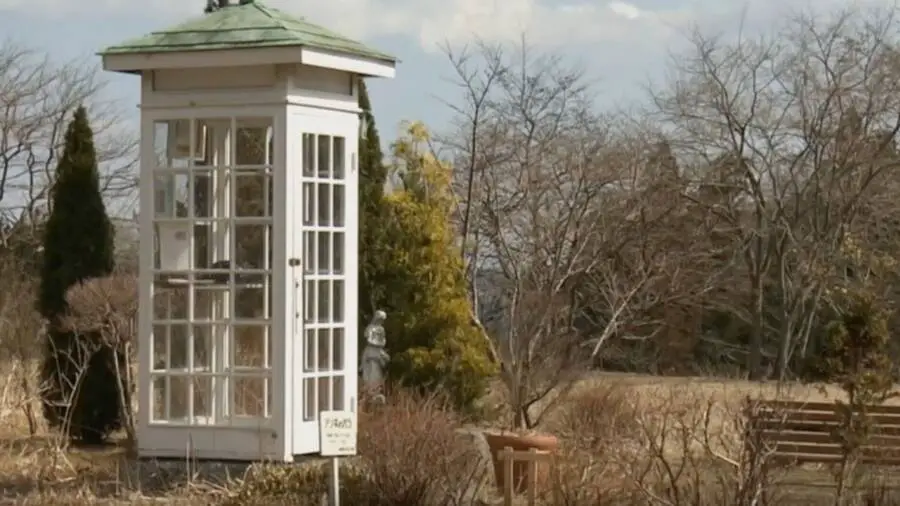In Japan, the survivors of the tsunami that claimed more than 2011 victims in 15.000 say they continually see the restless spirits of the victims, already dubbed "ghosts of the tsunami" by local folklore.
di Marco Maculotti
Translation of the article Inside The Disturbing Legend Of The 'Tsunami Spirits' That Have Haunted Japan Ever Since Its 2011 Disaster by Marco Margaritoff, published on allthatisinteresting.com, on October 16, 2020.
On 11 March 2011 a devastating 9.1 magnitude earthquake rocked the seafloor of East Asia, resulting in a wave the height of a 12-story building that crashed on the coast of Japan. More than 15.000 people lost their lives, millions of access to running water or electricity and more than 120.000 buildings were destroyed in minutes. The earthquake of Tohoku, named after the region of northeastern Japan from which it originated, was the most devastating in the nation's history. But the drama didn't end there: shortly after the disaster, traumatized survivors began to see victims' faces in puddles, wander the beaches, and appear on their doorstep. Creepy water-soaked figures were also seen hailing taxis, only to disappear once they climb into the back seat. And it wasn't about sightings One-off: residents of all the most affected cities have reported numerous apparitions of this kind.
British reporter Richard Lloyd Parry explored the widespread phenomenon of these apparitions "Spirits of the tsunami" in his essay Ghosts of the Tsunami and the bizarre circumstance was recently related in an episode of Unsolved Mysteries on Netflix. Explaining this disturbing case was no easy task. We have to consider how Japanese culture, collective pain and perhaps something that really It is disturbing that these tsunami spirits worked together to create. One thing is clear, however: these tales are as hair-raising as they are astounding.
It was 14:46 pm local time when the earthquake started. With its epicenter 45 miles east of Tōhoku at a depth of 15 miles below the ocean's surface, it shook the Earth for six full minutes by triggering 128-foot waves that crashed on Miyako town in northeastern Europe. Japan. Meanwhile, the water continued for six miles inland from Sendai. A total of 217 square miles were flooded, causing the destruction of hospitals, schools, businesses, homes, railways and everything in between. Perhaps even more devastating is the fact that the tsunami also caused a failure of the cooling system of the Fukushima Daiichi nuclear power plant, causing a notorious collapse. The Japanese reconstruction agency has estimated that the financial damage has reached $ 199 billion. The World Bank, meanwhile, has estimated the total economic cost at $ 235 billion. "In the 65 years since the end of World War II, this is the hardest and most difficult crisis for Japan," said then Prime Minister Naoto Kan.

As Japan progressed with its reconstruction, the disaster continued in supernatural ways. The spirits of the tsunami became a common affair. Richard Lloyd Parry had lived in Japan for 18 years when the natural disaster struck and was surprised to learn that the nation was more superstitious than he thought. According to Parry, seeing a ghost of the tsunami in the months following the earthquake was not uncommon. "The pain, loss, and heartache of the people came out," he told NPR in 2014. "And what also came out after a few months were stories of spirits, ghosts and supernatural events so common it almost seemed an epidemic ".
In 2016, a sociology graduate student named Yuka Kudo went to one of the cities most devastated by the disaster, Ishinomaki, to study this epidemic, focusing in particular on city taxi drivers, who claimed to have taken passengers aboard who turned out to be ghosts of the tsunami. Ishinomaki counted 3.097 dead and reported 2.770 missing. In all, 50.000 buildings were destroyed. The decimated city has seen most of its population relocate and taxi drivers wander aimlessly in search of customers to pick up. Of the 100 taxi drivers Kudo asked to tell supernatural stories on the subject, seven volunteered.
The first taxi driver told Kudo about an encounter he had had in the summer of 2011. It had only been a few months since the tsunami and there were hardly any customers. He was naturally shocked to suddenly see a young woman calling him to an area that had been particularly affected by the tragedy. In addition to wearing a heavy winter coat in the height of summer, the figure was also completely soggy. The driver barely had time to realize she hadn't rained in days before getting her into the back seat and hearing her request to be escorted to the largely abandoned Minamihama neighborhood in the aftermath of the tsunami. "That area is almost empty," she said, turning on the meter. "Are you sure you want to go there?" There was a long silence. Then, in a trembling voice, the woman asked: "I am dead?". The terrified driver turned, but found absolutely no one in his car.

Another taxi driver told Kudo that he had picked up a confused-looking young man in his XNUMXs who kept pointing forward when asked where he should go. Eventually he simply said "Hiyoriyama", a mountain park near Ishinomaki. After going through the hairpin bends of the mountain, the driver let his client get off on top of him, but when he turned around to get paid, there was no one left in his car.
Il Parry's investigative book it also documents how a man in Kurihara said he now despises rain, as he constantly sees the eyes of tsunami victims he knew in puddles. The ghost of an elderly woman is said to haunt a refugee home in Onagawa and is regularly sitting there, waiting for a cup of tea there. The pillow that was left outside of her for her got soaked in seawater every time her visits ended. And in Tagajō, a fire station received incessant calls until the firefighters went to the place they came from, to pray for the dead. At this point, the calls suddenly stopped.
But there have been even more disturbing incidents. Parry spoke with the Buddhist priest Taio Kaneda, who mentioned to him a man named Takashi Ono who had become "possessed" following the tsunami. Kaneda and Ono both lived several miles offshore, where the worst of the disaster had occurred. While Kaneda helped countless people properly bury loved ones, Ono stayed away from the disaster zone until months later he returned and realized what had happened. After seeing the monumental loss and devastation along the beaches, he returned home and dined with his family. Afterwards, he went to the backyard and started rolling around in the mud, talking gutturally and aggressively. His family was mortified. The next day, he didn't remember his actions.

While there are no clear-cut answers to these incidents, perhaps a closer look at the history of Japan's relationship with the spirit kingdom can provide some insight into these tsunami ghosts. Japan has a longstanding cultural relationship with ghosts, or yurei. In Shinto religion, which literally means "the way of the gods" and is the indigenous faith of the Japanese people, spirits inhabit all animate and inanimate things. Many Japanese have come to believe that, as the tsunami took people before they were ready to die, their restless spirit still wanders our plane of reality. And while global polls suggest Japan is one of the least religious nations on the planet, Parry has found otherwise.
"I didn't realize how real and alive the cult of ancestors and the cult of the dead were"Parry reported. "The other thing I've learned is something I should have known anyway, but that pain and trauma are often expressed very indirectly." Parry believes Ono's is one such situation. Although Kaneda performed an exorcism on him, so did many others who believed he was possessed by the spirits of the tsunami, Parry is not convinced that the supernatural is really behind this phenomenon. But he agrees with Kaneda that these spirits are real to anyone who believes they have seen them and, in that context, they should be taken seriously. “He never told me he didn't believe it… he said what matters to him is that people believe in them,” Parry said. “It doesn't matter if you believe in ghosts. What is real is suffering and pain ".

Parry theorizes that the widespread phenomenon of tsunami ghosts is likely the manifestation of a nation elaborating its collective trauma and its pain. Coastal cities across Japan have found other creative ways to cope with trauma. For example, the city of Otsuchi has installed a phone booth called a 'wilderness phone' on top of a hill overlooking the ocean, which allows mourners to text their loved ones in the other world. Dr Charles R. Figley of Tulane University's School of Social Work confirmed that trauma shared by the masses often produces strange collective reactions. "It is not uncommon for fellow citizens and family members who have survived catastrophic losses and dislocations to have common reactions, be it paranormal sightings, sounds or smells," he said. "Ghosts, for some, are more tolerable than the void created by death."
